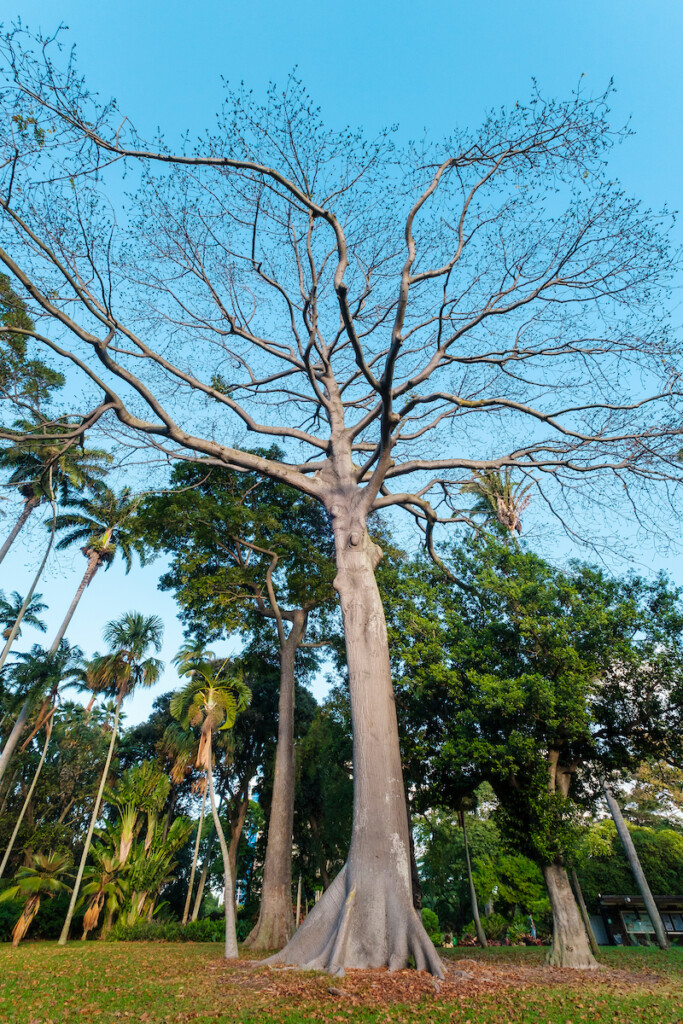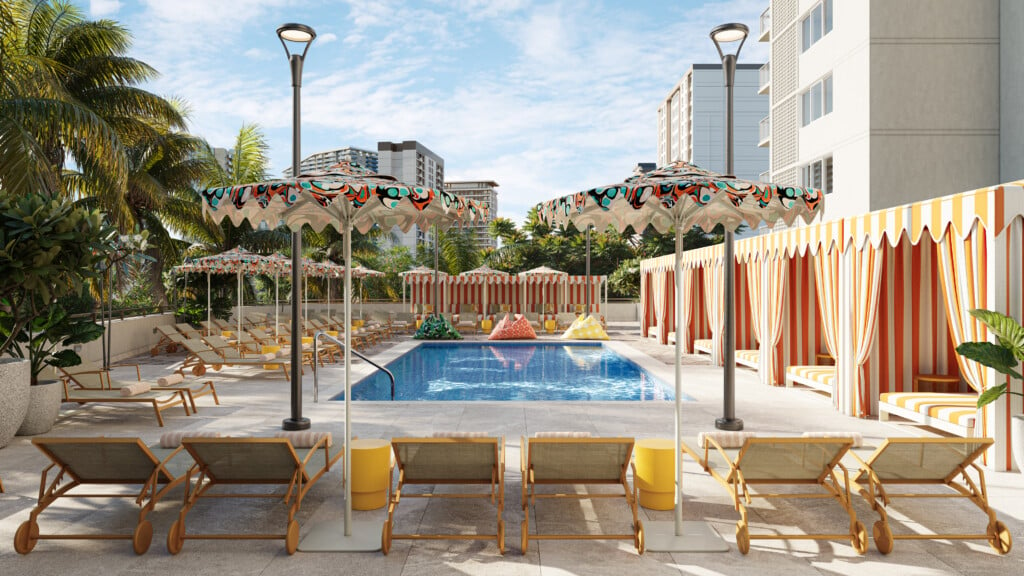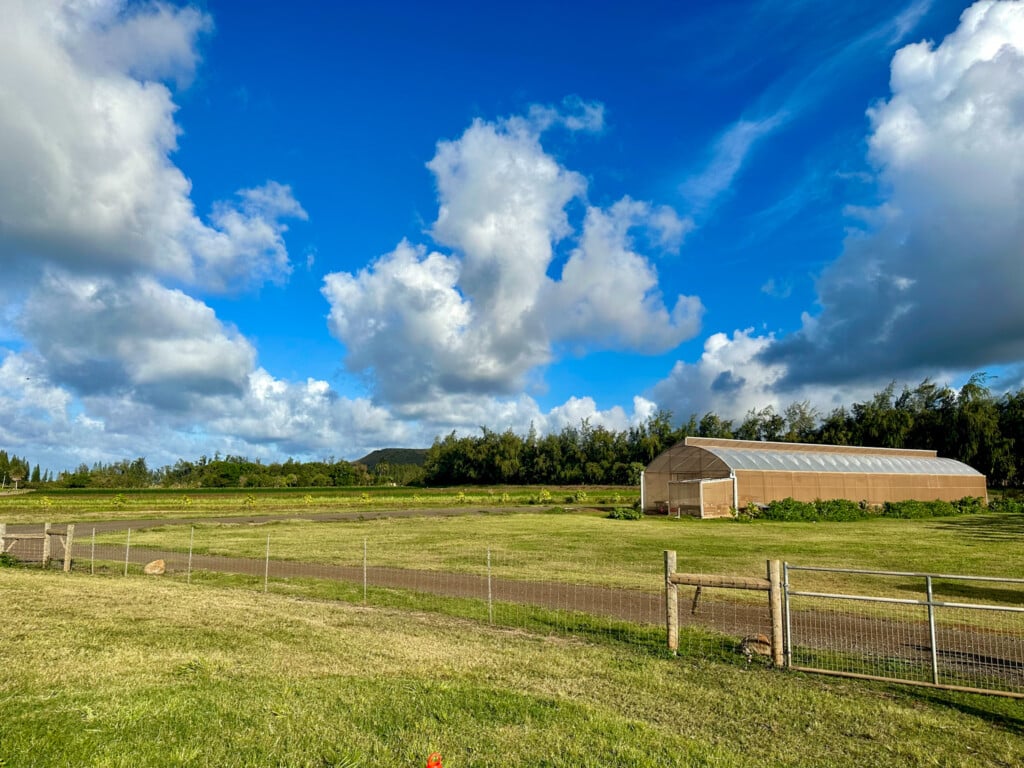8 Plants You Need To See at Foster Botanical Garden on Oʻahu
The city’s oldest botanical garden reopened recently and there’s no better time to visit.
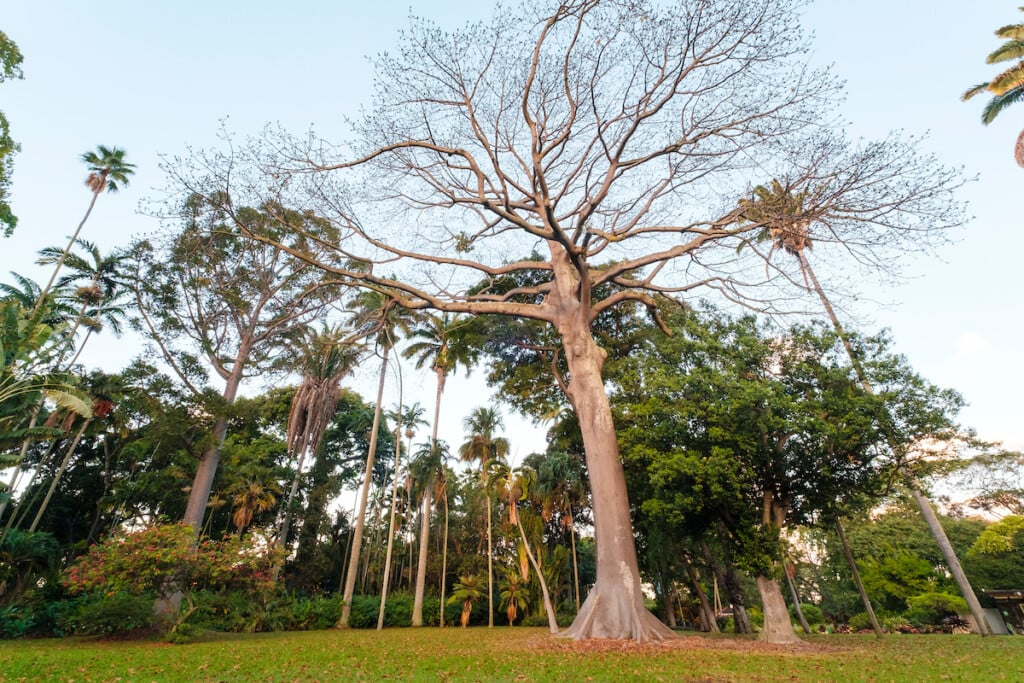
Last month Foster Botanical Garden, the oldest of five city-run gardens on Oʻahu, reopened after it had been closed for improvements to pathways and bathrooms.
Not much has changed at the 14-acre botanical garden, which can trace its roots back to 1853. That year Queen Kalama, the wife of King Kamehameha III, leased a 4.6-acre parcel of her land mauka of present-day Downtown Honolulu to Dr. William Hillebrand, a German physician and botanist.
Today, this garden—a quick walk from Downtown and 4 miles from Waikīkī—is home to an impressive array of palms, tropical plants and some of the trees in the city’s Exceptional Trees program. (This garden boasts 21 of these trees.)
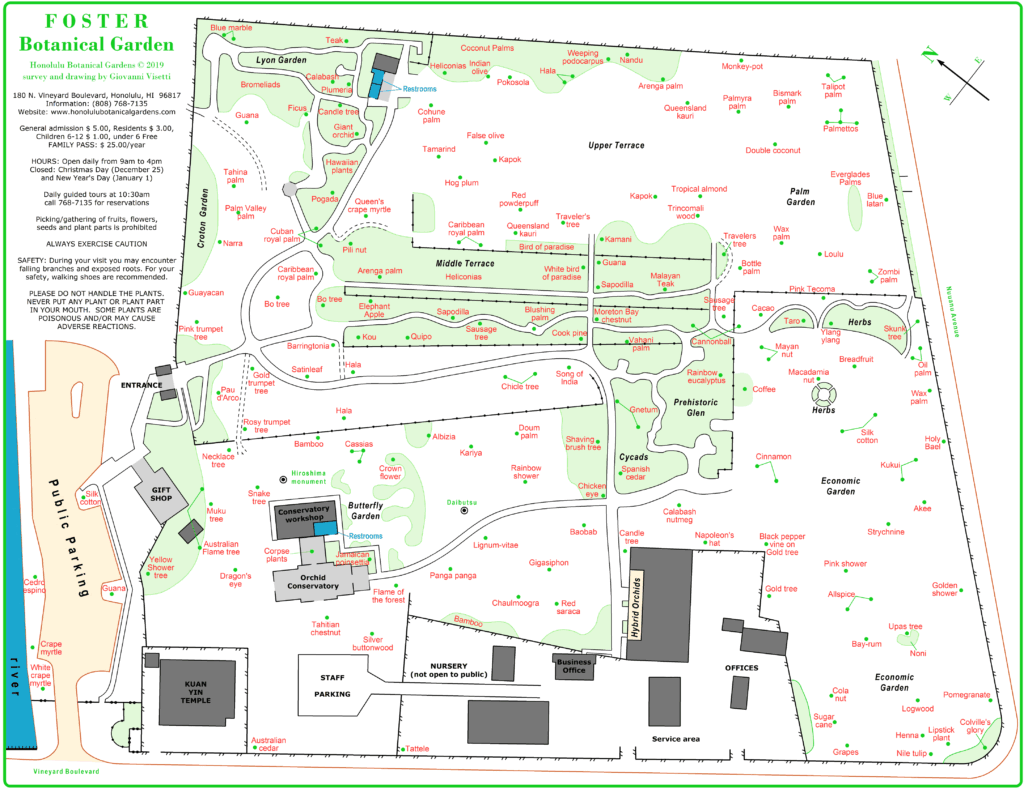
Map of Foster Botanical Garden
There are dozens of must-see plants, trees, shrubs and flowers here, from the baobabs native to tropical Africa to the hala, or screwpine, tree of which its leaves are woven into mats, fans, baskets and hats. Here are eight plants and trees you should make sure you see the next time you visit.
1. Bo Tree (Ficus religiosa)
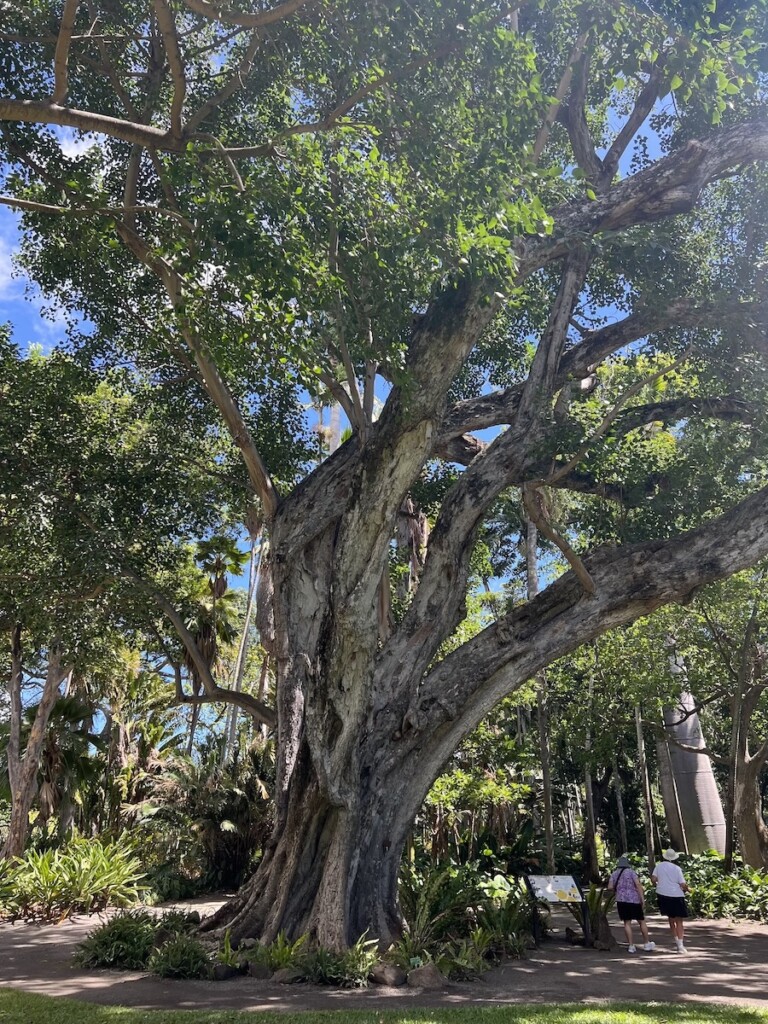
Bo tree.
Photo: Catherine Toth Fox
Revered as the tree under which Buddha was enlightened, this tree is one of the highlights of the garden—and located right at the entrance. A Buddhist monk gave this tree to Mary Foster in 1913; it started as a cutting of the famous Sri Lankan tree dating back to 288 B.C. It’s a member of the fig family and has heart-shaped leaves.
2. Kapok (Ceiba pentandra)
This deciduous tree, native to tropical America, was planted by Hillebrand in the 1850s. This is one of the oldest and more impressive trees of the city’s Exceptional Trees. Its leaves are food for spider monkey (which don’t live in Hawaiʻi) and its seed pods release cottony floss that was once used for stuffing pillows and life preservers.
3. Cannonball Tree (Couroupita guianensis)
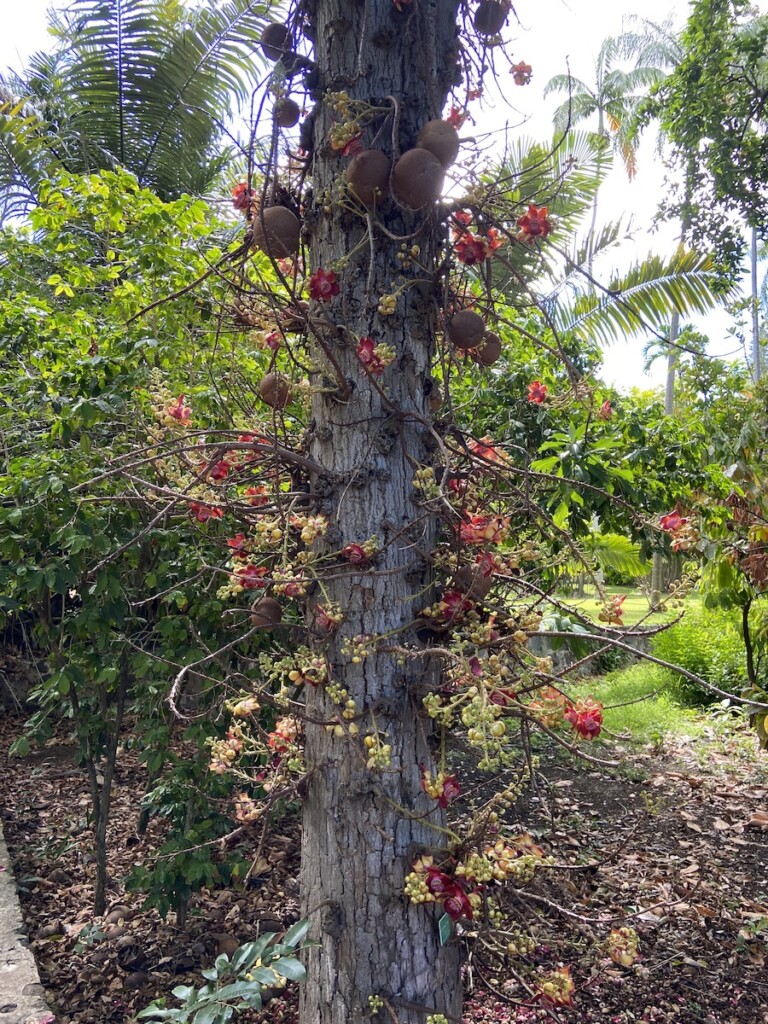
Cannonball Tree.
Photo: Catherine Toth Fox
This is a fun tree to find, especially for kids. As the name suggests, the main feature of this tree are its fruits; foul-smelling and heavy, these woody spheres resemble cannon balls and grow directly from its trunk. This tree is one of the largest in the U.S., planted here in 1931.
4. Quipo (Cavanillesia platanifolia)
Related to the popular hibiscus and native to Central America, this deciduous tree has papery winged seedpods, often used in wreaths and flower arrangements. This particular quipo is the largest of its kind in the U.S.—it’s about 200 feet tall—planted here in 1933.
5. Queensland kauri (Agathis robusta)
This giant, broad-leaved conifer tree hails from the rainforests of Australia and Papua New Guinea and can grow upwards of 150 feet. Its resin is used in varnishes, linoleum, road markings and printing ink. These trees were introduced in Hawaiʻi in the 1850s, and this one was planted here in 1920.
5. Loulu Palm (Pritchardia species)
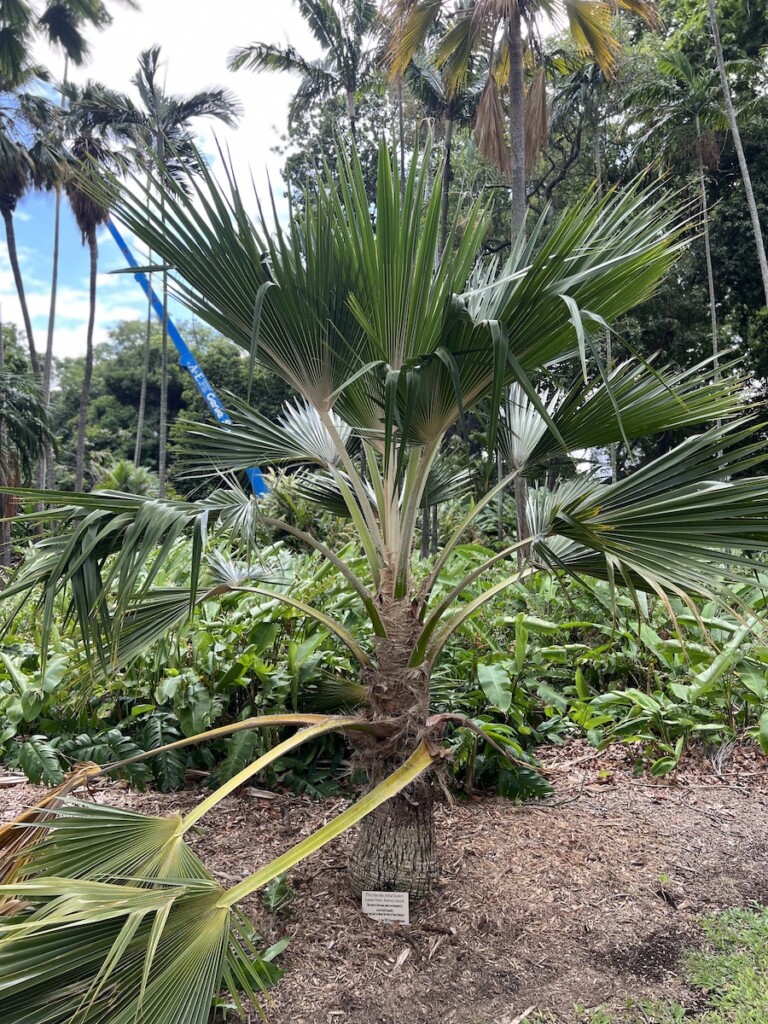
Loulu palm.
Photo: Catherine Toth Fox
The loulu palm are the only palm trees native to Hawaiʻi. There are 24 species of loulu found throughout the Hawaiian Islands; nine are endangered because of habitat loss, rats, weeds and feral animals. These “fan palms” have broad, round leaves that are deeply pleated and have narrowly pointed leaf tips.
6. Traveler’s Tree (Ravenala madagascariensis)
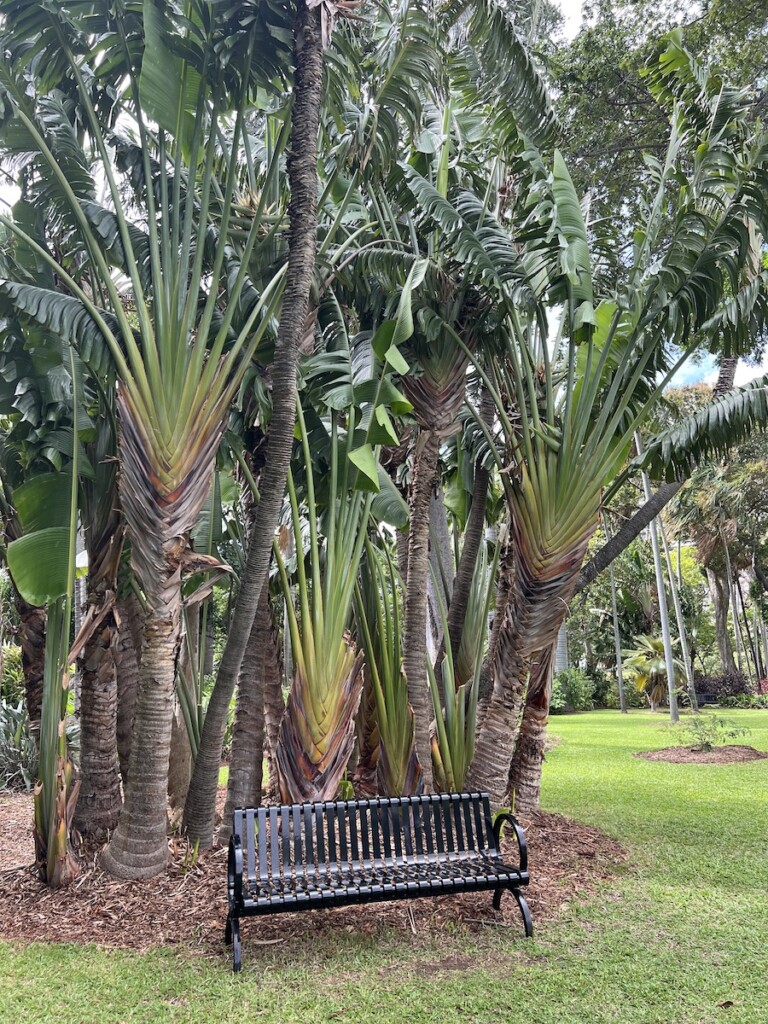
Traveler’s tree.
Photo: Catherine Toth Fox
This Madagascan plant appears to be palm-like, but it’s actually a member of the bird-of-paradise family. Its large, banana-like leaves have long, pale petioles (leaf stalks) that are arranged in a way that resembles a fan, and its white flowers bloom at night. It gets its name because the water it accumulates in its leaf bases has been used in emergencies for drinking.
7. Breadfruit (Artocarpus altilis)
The ʻulu, or breadfruit, tree is one of the most important trees in the Pacific. The fruit tastes and cooks similar to a sweet potato, and its lightweight wood was used to make surfboards, drums and canoe hulls. Its leaf shape is often used in the design of Hawaiian quilts.
8. Corpse Flower (Amorphophallus titanum)
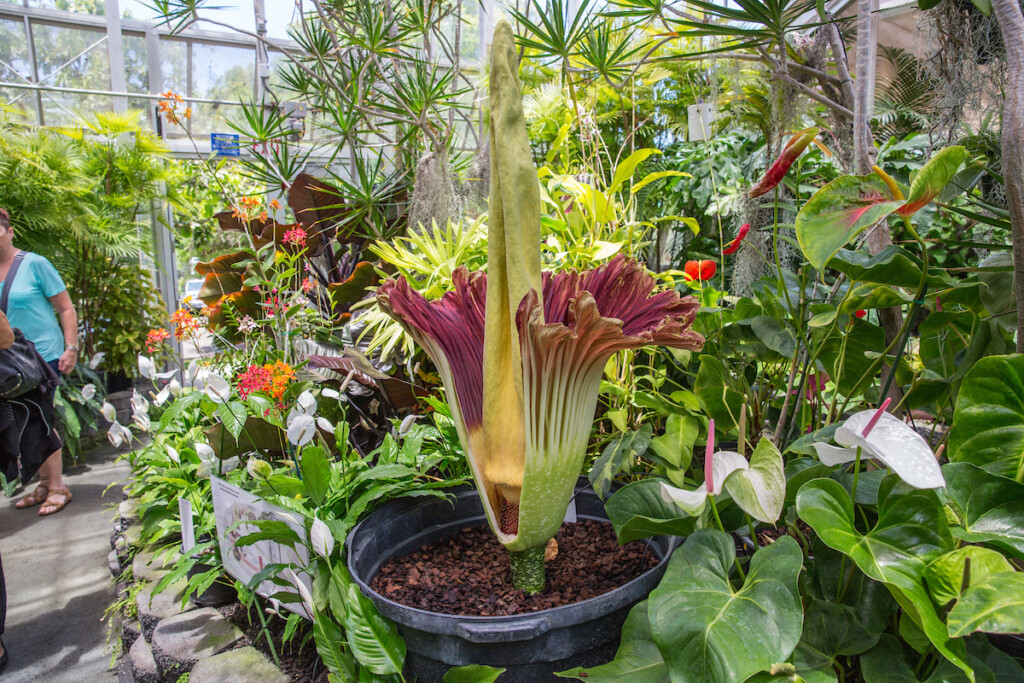
Corpse flower.
Photo: David Croxford
Located in the garden’s conservatory, along with some rare varieties of tropical foliage plants, is the corpse flower. It’s an endangered species native to the rainforest of Sumatra, Indonesia. It can take between seven and 10 years for a corpse flower to bloom for the first time, and this rare event—it only lasts a few days—lures visitors to botanical gardens around the U.S., including here. It gets its name from the flower’s rancid smell.
50 N. Vineyard Blvd., Honolulu, (808) 768-7135, @honolulubotanicalgardens. To learn more about the city’s five botanical gardens—and to check out their events and classes—visit here.
